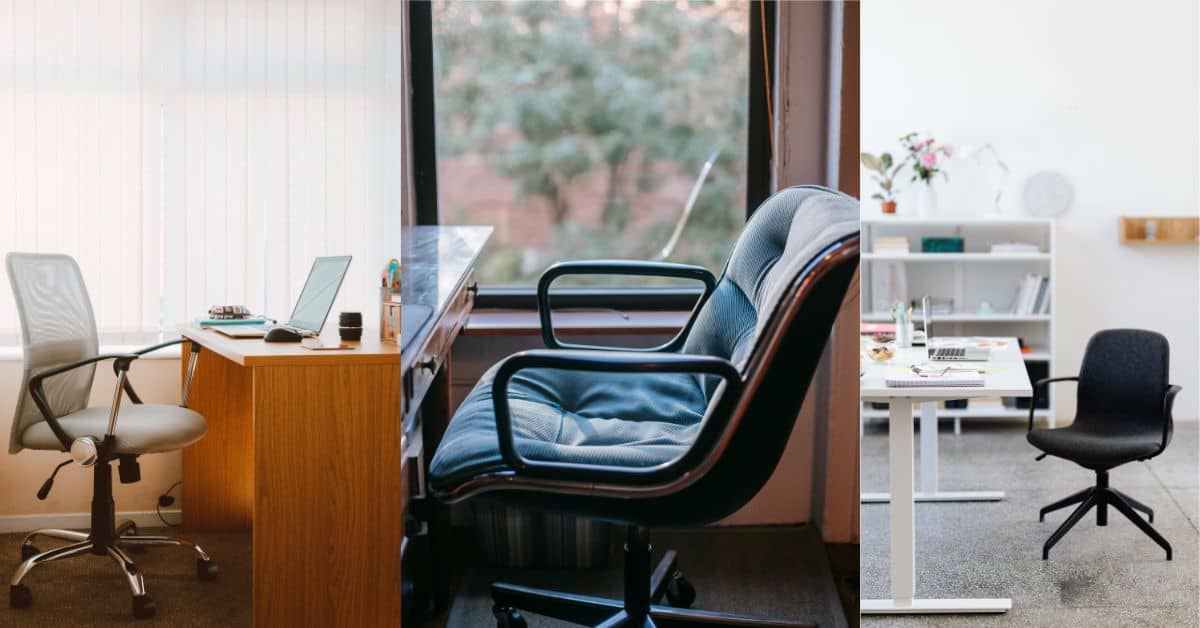This post contains affiliate links.
Setting up a home office? You’ve probably spent hours picking out the perfect desk, computer, and wall art. But have you thought about the color of your office chair? It might seem like a small detail, but it’s one that could make a positive impact on your workday.
The best office chair color for productivity is blue. Blue is known for its calming effects, which can reduce stress and improve focus, making it an ideal choice for enhancing productivity in a workspace.
Keep reading to discover not only why this particular color stands out but also how it influences your work environment and mental state. We’ll delve into the psychology behind different color choices and their effects on productivity.
The Psychology of Colors

When it comes to designing a productive workspace, the psychology of color plays a pivotal role, often more than we realize. Colors have the power to influence our emotions, behaviors, and even physiological responses. This isn’t just a matter of personal preference; there’s substantial research and psychological theory backing these claims.
Different hues can evoke different feelings and reactions. For instance, warm colors like red and yellow are often associated with energy and creativity but can also increase feelings of anxiety or anger in high concentrations. On the other hand, cool colors like blue and green tend to promote calmness and concentration.
However, individual preferences and cultural differences significantly influence how color affects us. While blue might generally be seen as calming, it might not resonate the same way with someone who associates the color with a negative personal experience.
Neutral tones like black, white, or grey are often preferred in environments where focus and minimalism are prioritized, seen as less distracting and more professional.
In the corporate world, colors often align with brand identity. Google’s offices, known for their vibrant and creative workspaces, use bright colors to stimulate creativity and innovation. This aligns with their brand’s image of being dynamic and forward-thinking.
In contrast, law firms or financial institutions often opt for more subdued colors, reflecting seriousness and stability.
When selecting the color of an office chair or workspace, it’s not just the color itself but also its saturation and brightness that matter. A bright, neon blue might be more distracting than a softer, pastel blue. Similarly, a very dark green might not have the same calming effect as a lighter, more natural green.
Why Blue Is Considered the Best Color for Productivity
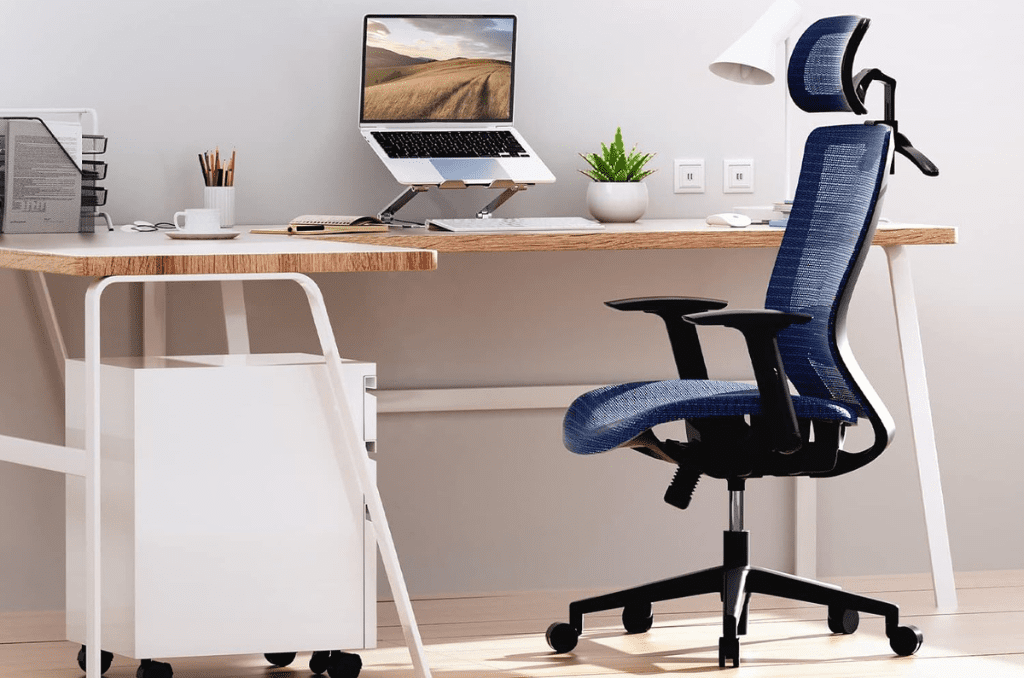
Blue is often hailed as the best color for productivity in office environments, and this is backed by a blend of psychological research and practical applications. Here’s a deeper dive into why blue stands out as a productivity booster:
1. Calms the Mind and Reduces Stress
Blue’s calming effect on the mind is well documented. Studies have shown that exposure to blue light can lower blood pressure and heart rate, promoting a sense of relaxation and reducing stress levels. This calm state of mind is essential for optimal focus and productivity. When our minds are racing with worries and anxieties, it becomes difficult to concentrate on the task at hand. Blue, by inducing a sense of calm, allows us to approach our work with a clear and focused mind.
2. Enhances Cognitive Function and Creativity
Beyond its calming properties, blue has also been shown to enhance cognitive function and creativity. The calm state of mind allows for better focus, concentration, and problem-solving, leading to enhanced cognitive performance. Additionally, blue’s association with openness and expansiveness can stimulate creativity by encouraging divergent thinking and exploration of new ideas.
3. Evokes Feelings of Trust and Security
Blue is often associated with feelings of trust, security, and reliability. These emotions can be particularly beneficial in work environments, where individuals need to feel confident in their abilities and feel supported by their colleagues. Blue’s presence can foster a sense of teamwork and collaboration, further enhancing productivity.
4. Promotes Mental Clarity and Focus
Blue’s ability to promote mental clarity and focus is crucial for sustained productivity. Unlike colors like red or yellow, which can be stimulating and distracting, blue creates a sense of tranquility that allows us to concentrate on the task at hand without feeling overwhelmed. This is particularly important for individuals who work on detailed or complex projects.
Other Productive Color Options
When selecting an office chair, the color choice can be as crucial as ergonomic design or material. Different colors not only change the aesthetics of your workspace but can also have varying impacts on your mood, productivity, and even well-being. Let’s explore some popular color options for office chairs and what they mean for your workspace.
1. Green
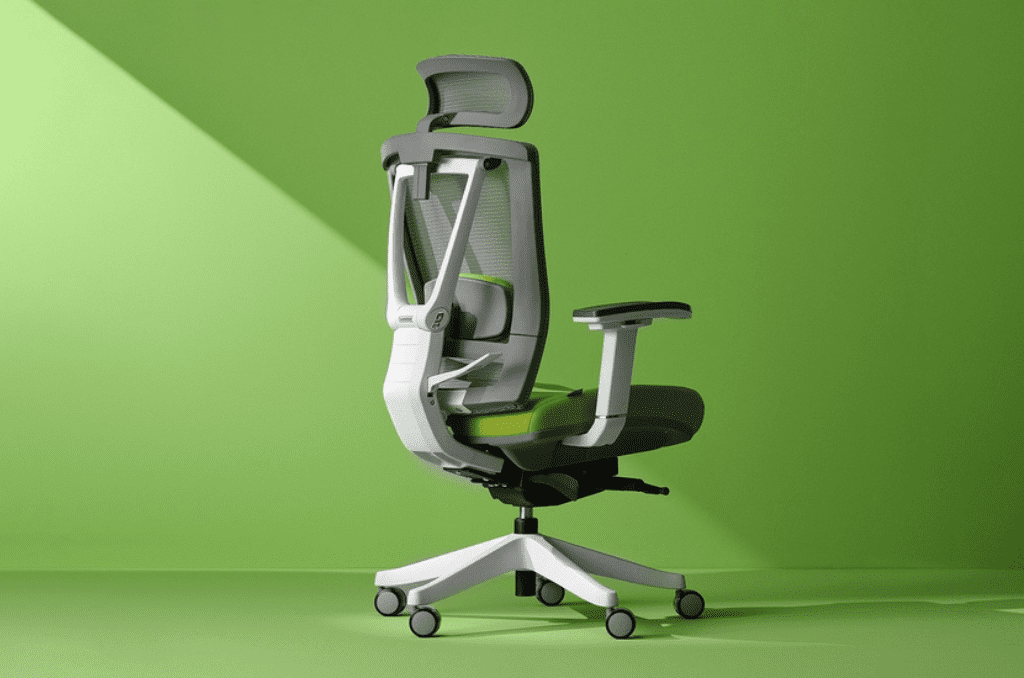
Green is a color that’s easy on the eyes and known for its calming effects. It’s often linked to balance and reassurance, making it a great choice for environments where stress reduction and sustained concentration are important. Green can be particularly beneficial in creative or brainstorming spaces, as it’s thought to promote harmony and balance.
2. Red
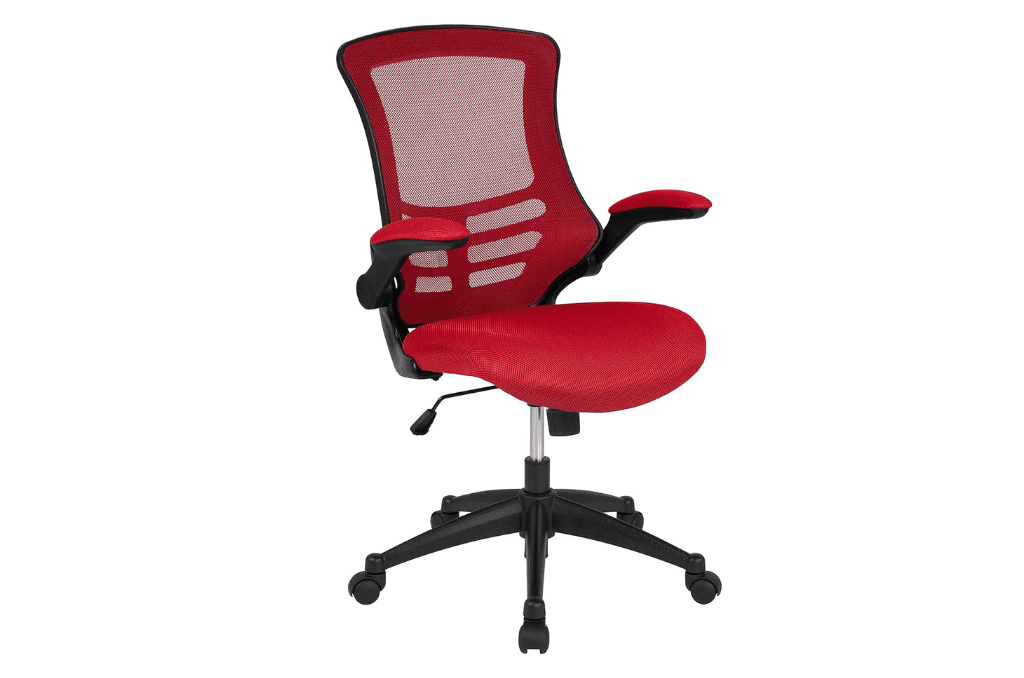
Often associated with energy and passion, red can be a stimulating choice. It’s known to increase heart rate and create a sense of urgency, which can be beneficial in environments where high energy and dynamism are required. However, too much red can also lead to feelings of stress or aggression, so it’s best used in moderation or as an accent color.
3. Yellow
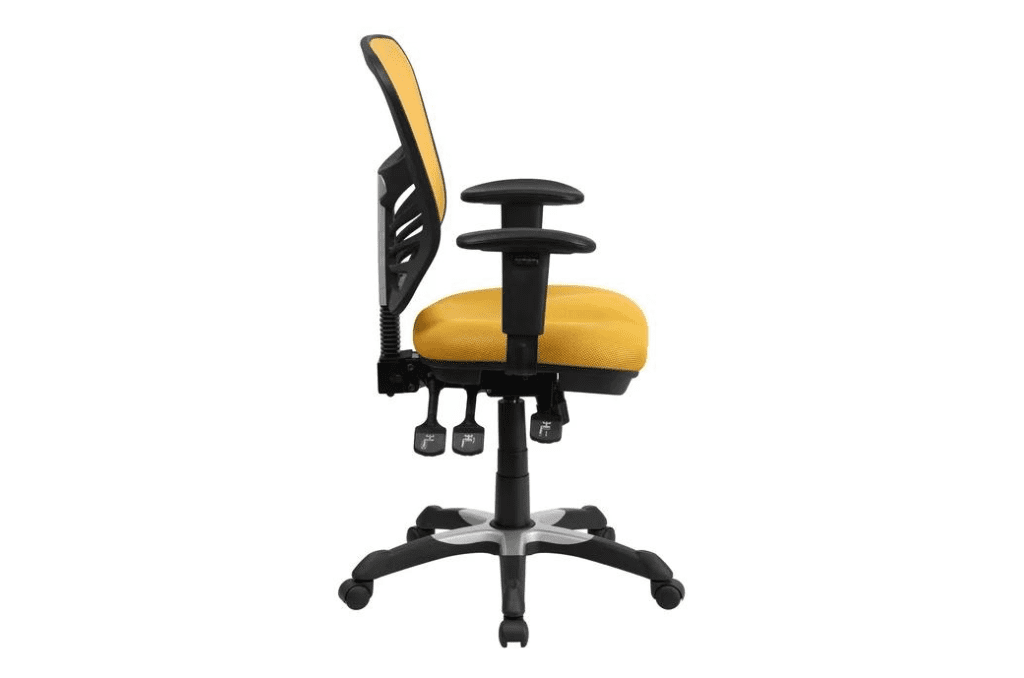
This bright and cheerful color can stimulate optimism and creativity. It’s often used in creative industries to inspire and uplift. Yellow is believed to trigger innovation and fresh thinking. However, in large amounts, it can be overwhelming and distracting, so it’s best used in smaller doses or in softer shades.
4. Black
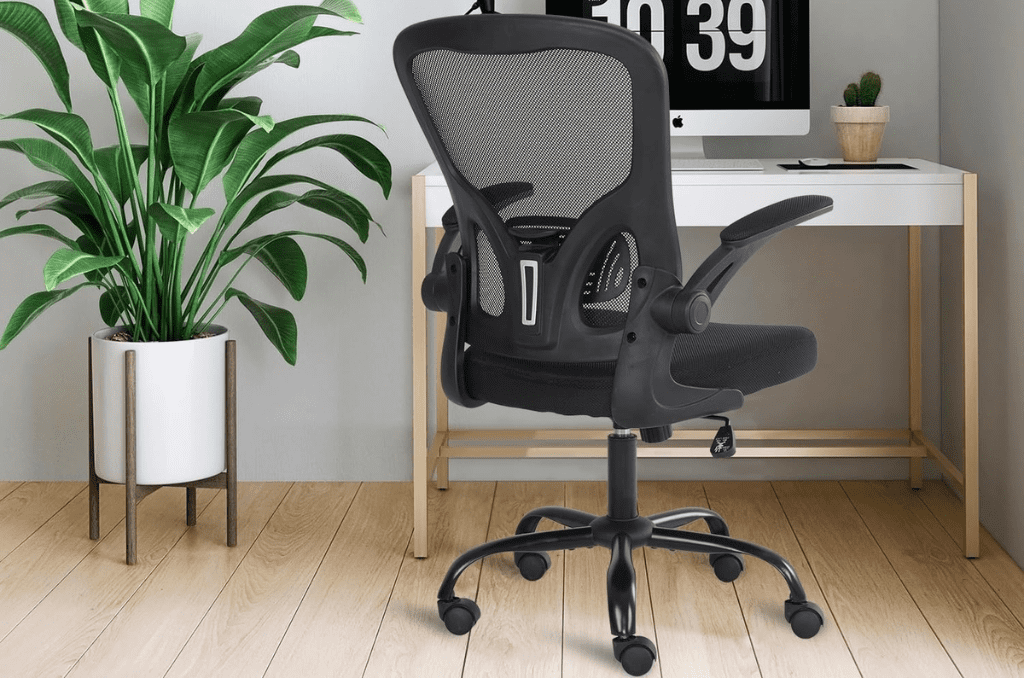
Black chairs are a classic and professional choice. They can convey a sense of authority and sophistication. Black is also practical, as it doesn’t show stains or wear easily. However, too much black can make a space feel heavy or oppressive, so it’s important to balance it with lighter colors or natural light.
5. White
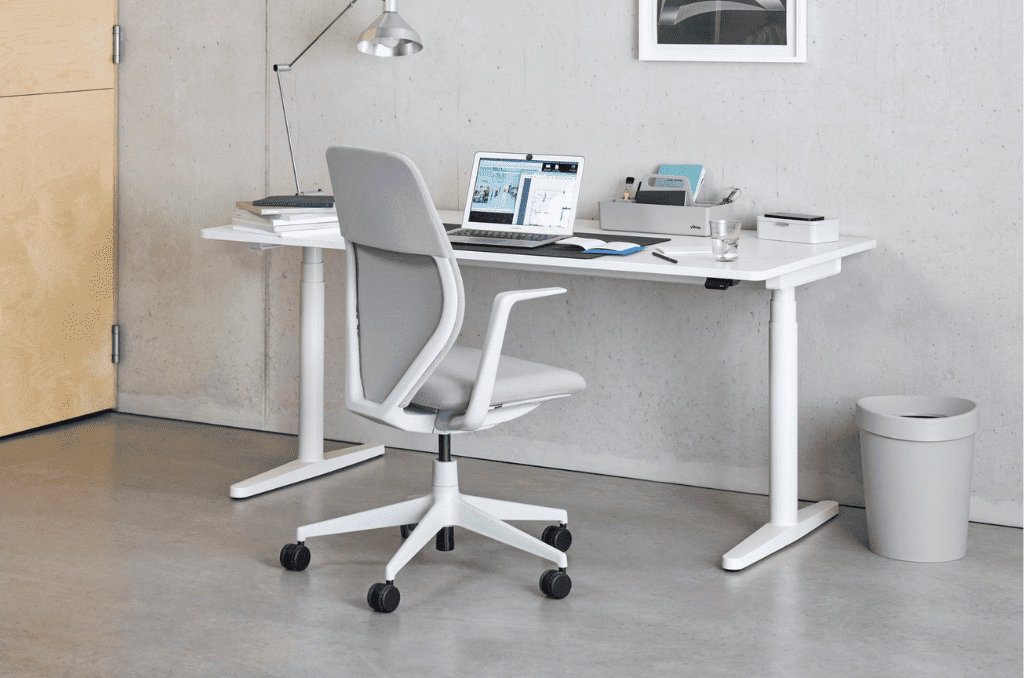
White chairs can help create a sense of openness and clarity. They can make a small space feel larger and are often associated with simplicity and precision. However, white can be challenging to keep clean and might not be the best choice for high-traffic areas or where spills are likely.
6. Gray
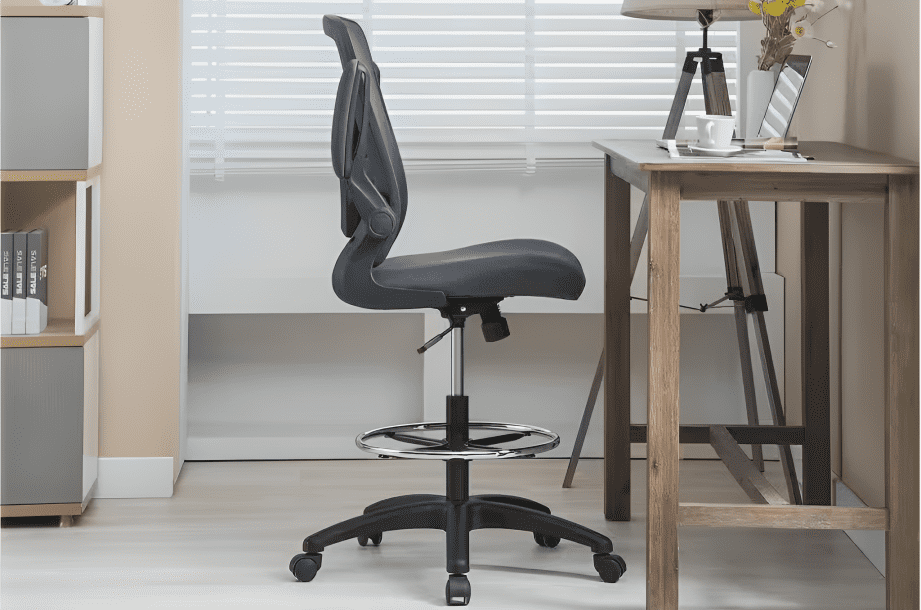
Gray is a neutral color that can offer a modern and understated look. It’s versatile and can be paired with almost any decor. Gray can also have a calming effect, similar to blue, but without the risk of feeling too cold or detached.
Each color has its pros and cons. Think about what you need for your job and what makes you feel good when choosing a chair color.
Factors to Consider When Choosing an Office Chair Color
Choosing the right color for your office chair involves more than just picking your favorite shade. Here are key factors to consider, formatted in a way that’s easy to follow and understand:
- Your Workspace Environment
- Open vs. Private Office: In an open office, choose colors that blend well with the overall design. In a private office, you have more freedom to pick a color that suits your personal taste.
- Lighting: Consider the lighting in your office. Bright colors work well in spaces with lots of natural light, while darker colors suit well-lit, artificial environments.
- The Type of Work You Do
- Creative Fields: If your work requires creativity, vibrant colors like yellow or green can stimulate your imagination.
- Analytical Work: For jobs needing focus and detail, calming colors like blue or gray are ideal.
- Psychological Effects
- Mood Enhancement: Colors like blue and green can enhance mood and reduce stress.
- Energy Levels: Brighter colors, such as red or orange, can boost energy but might be overwhelming if used excessively.
- Personal Preference and Comfort
- Favorite Colors: Your favorite color can make you feel more comfortable and happy in your workspace.
- Color Associations: Think about any personal associations you have with certain colors. Your unique experiences can influence how a color affects you.
- Practical Considerations
-
- Maintenance: Darker colors hide stains and wear better than lighter colors.
- Longevity: Neutral colors are less likely to go out of style and can be a practical long-term choice.
- Overall Aesthetic and Branding
- Company Branding: If applicable, consider your company’s branding and colors.
- Professional Image: Choose a color that reflects the professional image you want to project.
Before You Go…
Remember that the right color can significantly influence your mood, focus, and overall work performance. But color isn’t the only factor to consider when choosing an office chair.
Comfort, especially lumbar support, is crucial for maintaining good posture and ensuring long-term health and comfort. I highly recommend checking out my previous article:

